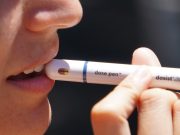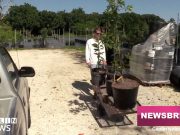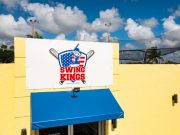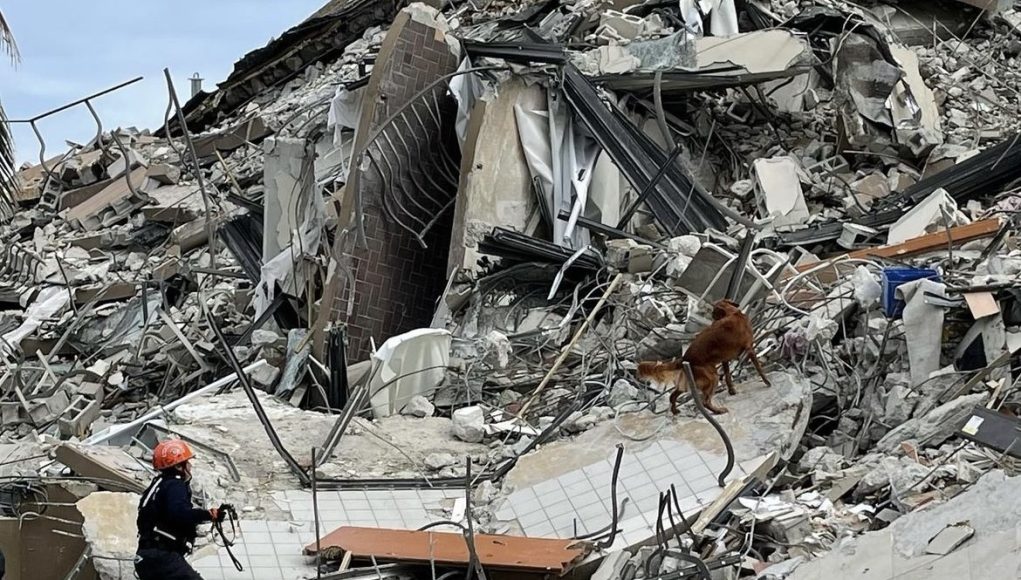In the late, quiet hours of the night, at about 1:22 a.m., Champlain Towers South, a condominium in Surfside, collapsed on June 24, 2021, killing 98 people.
Mounds of debris, rubble, and nails cover every inch of the area, leaving complete devastation in its wake.
Search and rescue dog Blaze and his handler, Hialeah firefighter Barbara Gonzalez-Tamburello, were deployed to assist in the recovery efforts in which he is specially trained to find live victims.
“Even as I had seen the destruction in the news and was getting updates, it didn’t compare to getting there and seeing it with my own eyes, smelling it and living it,” she said. “That was terrible. One of the worst.”
Despite the efforts, no live humans were found.
The 6-year-old red golden retriever, weighing about 65 pounds, is the first K9 team in the City of Hialeah Fire Department’s history, as well as a certified therapy dog. Blaze comes from a long bloodline of search dogs. The team has been working together since she got him at eight weeks. He officially joined the department in 2020.
Blaze lives with his owner, Gonzalez-Tamburello, and also reports to work with her when she is on shift. The duo is constantly together, further fueling her love for dogs.
“Blaze is a people lover. He has this effect when he sees somebody where he wants to sit with them and love on them,” she said. “He automatically will sit at your feet, lean into you, and put his body pressure against you.”
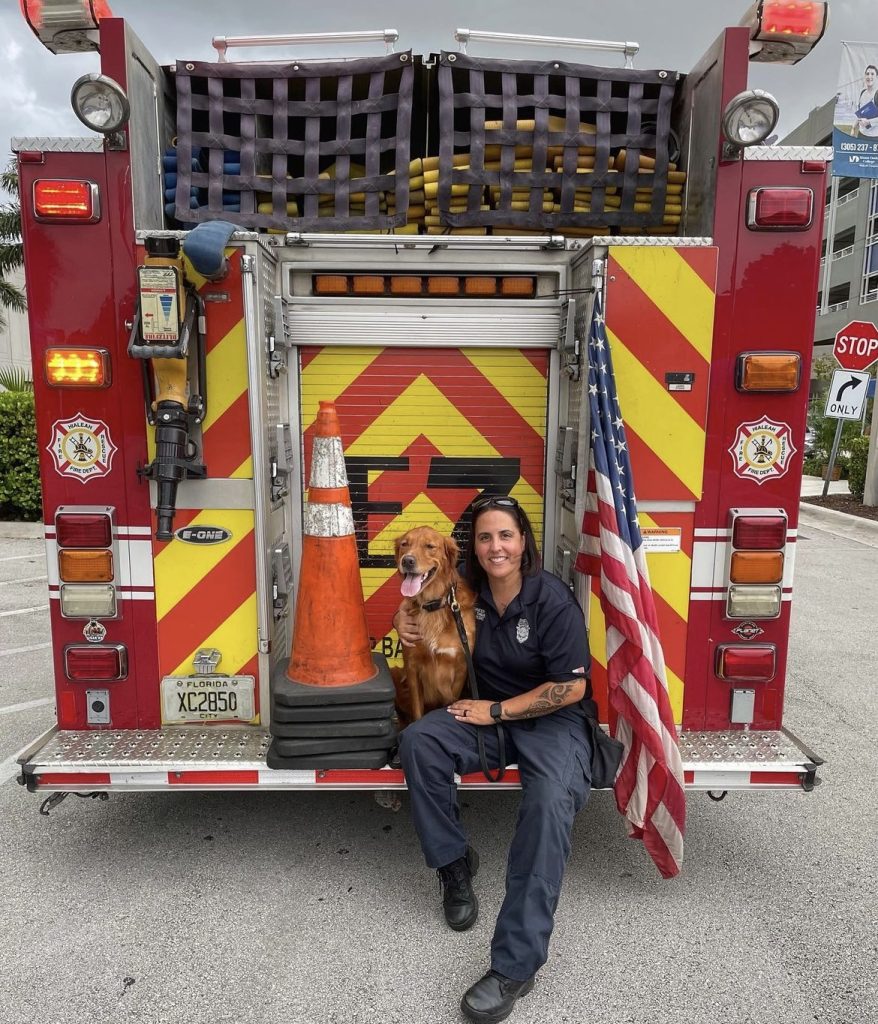
The importance of search and rescue dogs is crucial to how a city responds to disasters and begins to heal from them.
The unit has been deployed to the building collapse in Surfside, Hurricane Ian in Fort Myers, and missing children cases in their very own city of Hialeah, and Dania Beach.
As a member of Florida Task Force Two, the Urban Search and Rescue Team (USAR), Gonzalez-Tamburello got Blaze with the idea of already establishing a K9 unit in mind since there was none in the city.
During a training in Vermont as a HAZMAT specialist, she slept in the same room with the canines for about a week.
“In speaking to them and interacting with them, I just knew it was something I wanted to do from the beginning,” she said. “It was just waiting for the right time since it takes a lot of dedication to train them.”
Early stages of training emphasize obedience through a reward system. A prey drive, which is a dog’s instinctive nature to find and hunt, must be established to assure that the dog wants to search, as well as a toy drive that demonstrates how badly they want the toy.
Once the prey and toy drive are established, the searching process is introduced through games like hide-and-seek where the handler hides behind close objects with a toy.
The process continues as new elements are introduced, such as teaching them to bark to get the toy. The toy then turns into a victim and the distance of the game is extended to challenge the canine.

Victims then hide in big black barrels to help the canine make the association until lids are placed on them and the dog must find them and identify them with a bark.
The level of difficulty continues to increase as more barrels and rubble are introduced as they must adapt and not be afraid. Real-life scenarios are simulated in order to create the comfort level that the dog needs.
“Not every dog can traverse all of these obstacles. The dog is working independently of you. Blaze is very oriented, strong minded and independent,” she said.
“We were out at the rubble pile training site for three to four hours at a time and we were doing that three times a week, sometimes four. There are hundreds of training hours that go into these dogs.”
The earliest FEMA will allow a canine to be tested to become search and rescue certified is 18 months, so until then, the handler continues training if the dog continues to progress through the stages. Blaze was certified at 20 months.
The task force is divided into three teams (red, white, and blue) of 80 people each and works on a rotating schedule when a state of emergency is declared. Gonzalez-Tamburello is part of the red team.
There is always a possibility of getting dispatched within the city of Hialeah as well if a disaster hits the criteria that requires a K9 unit such as a train derailment, plane crash, building collapse, etc.
“The environments are very high intensity. Blaze knows and is very in tune with recognizing when somebody’s emotions are off,” she said. “He knows when he is going to be working. He knew the Surfside search wasn’t a trip to the park.”
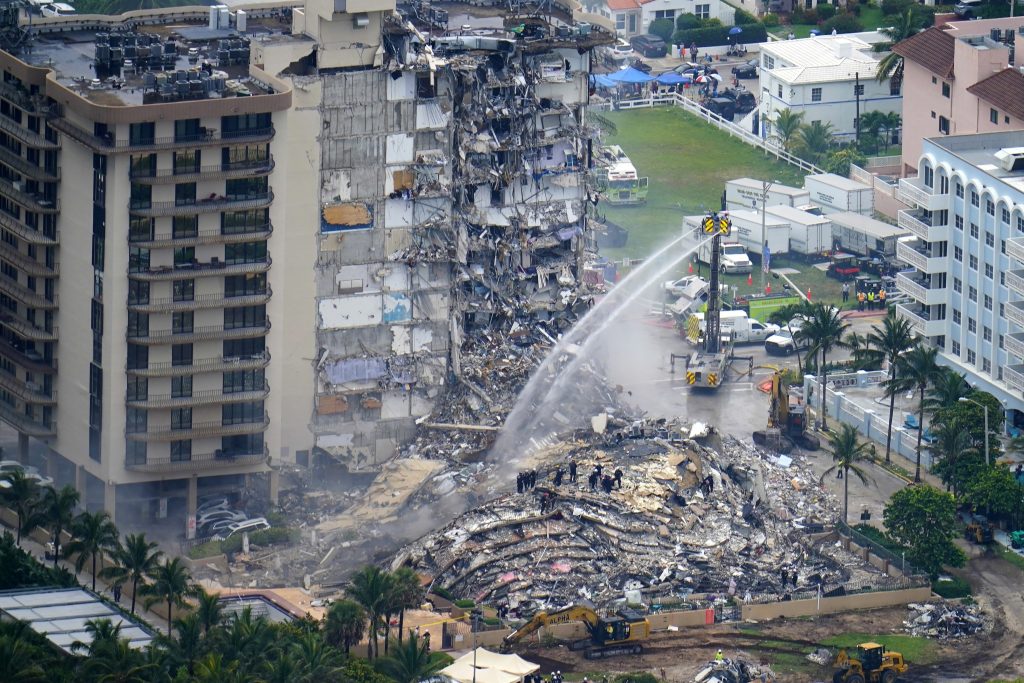
The search process at Surfside was grueling. Within five minutes of arriving at the scene, Blaze was called in by a canine coordinator standing on a rubble pile. Each dog was assigned to a designated area in order to cover more ground.
“Odor, in the form of a gas or vapor, will diffuse from the source through voids in the rubble pile,” Dr. Lauryn Degreeff-Silk, Associate Professor of Chemistry and Biochemistry at Florida International University, said. “The closer to the odor source, the higher the concentration of odor.”
The canines work on a rotation system which allows them to recuperate from intense weather conditions such as heat. If it’s really hot, the dogs will search for 10 to 15 minutes at a time.
“Search dogs are not trained to pinpoint. The intent in teaching them is to alert at the highest concentration of live odor. In essence, teaching them through obedience, temperament, agility, and directionals makes the search process more effective,” said Sylvia Arango, Lead K9 Handler of Florida Task Force Two.
Due to the strong storm surge wiping away physical structures when Hurricane Ian struck Fort Myers and since there were no live people trapped, Blaze was sent to the area but his services were not required. Those who were still alive were pulled to safety from apartment buildings.
“The missing female reported was found by me driving around and canvassing the area last seen,” said Gonzalez-Tamburello.
In the case of the missing boys, Blaze aided in the search but the boys were no longer in the area. They were found in another city two days later. At this point in Blaze’s career, no survivors have been found.
School visits are also an important part of Blaze’s busy schedule, whether it be for career day, show-and-tell, or fire prevention education.
As a therapy dog, Blaze underwent an extensive 40-hour course. The course consisted of a temperament test to determine his propensity and reaction to a stranger’s touch. This meant having to be observed in a household environment with a child by a certified therapy dog tester/observer.
“It has been proven that visits by certified therapy dogs lift spirits, remove anxiety, provide companionship, and eliminate loneliness and despair,” said Sharon Crockett of Space Coast Therapy Dogs in Brevard County.
The motivation for having Blaze be therapy certified stems from the need for a therapy dog in the City of Hialeah. Prior to Blaze becoming certified, Hialeah did not have any therapy dogs at its disposal. This included both the fire department and the police department.
“I didn’t just want to use Blaze for disaster work. I wanted to be able to use him more often,” Gonzalez-Tamburello said. “It would be a waste of his talent not to have him do something else.”




